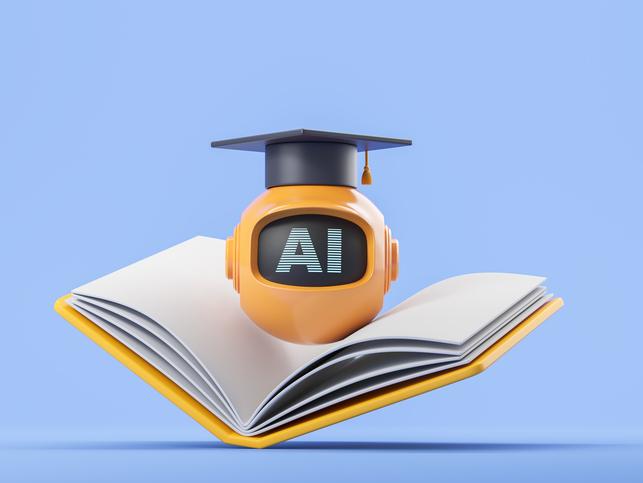
How to align AI tools with teaching philosophies: a practical guide

Artificial intelligence presents both opportunities and challenges in higher education that demand thoughtful consideration. As educators, we must navigate this new terrain carefully, aligning our use of AI tools with our fundamental teaching philosophies. Here, I’ll outline a practical framework for academics to integrate AI effectively into their teaching practices while remaining true to their pedagogical principles.
At the heart of effective AI integration lies the understanding of how these tools align with philosophical approaches to education. Each teaching philosophy offers a different perspective on how AI can enhance or potentially compromise educational objectives.
Socratic
The Socratic approach, focused on critical thinking and enquiry, reveals the multifaceted nature of AI in education. AI can simulate engaging dialogues by generating thought-provoking questions and providing diverse perspectives, potentially broadening students’ understanding. Tools such as ChatGPT can function as a discussion catalyst, engaging students in dialogue and prompting deeper enquiry into topics.
- AI-aware pedagogy for business courses
- Three ways to promote critical engagement with GenAI
- Apply the principles of critical pedagogy to GenAI
- Spotlight guide: Bringing GenAI into the university classroom
However, educators should be mindful that excessive reliance on AI might inhibit deep engagement with material and genuine critical thinking. The key lies in using AI to introduce new ideas or perspectives while ensuring that human-led discussions remain central to the learning process.
Constructivist
Within the Constructivist approach, which emphasises collaborative learning and knowledge building, AI offers possibilities for creating adaptive learning environments and facilitating discovery learning. Tools such as Canva and Synthesia enable collaborative visual projects and video content creation, encouraging students to explore beyond their comfort zones. AI-powered Trello can enhance communication in group work, supporting a Constructivist learning environment.
Yet, careful implementation is crucial to preserve learners’ ability to independently construct knowledge and maintain natural developmental progression. Setting clear guidelines for AI use in group projects helps ensure genuine collaboration and independent thinking.
Behaviourist
The Behaviourist approach to learning through conditioning finds strong support in AI’s capacity for immediate feedback and data analysis. Tools such as Google Forms with automated feedback can be implemented for quizzes and assessments, while Jungleai (formerly Wisdolia) can suggest flash cards and quizzes, employing spaced repetition to reinforce learning.
However, educators should consider that automated responses might oversimplify learning processes and miss important emotional nuances. The most effective approach combines AI-driven feedback with human judgement and empathy.
Humanist
The Humanist approach, emphasising personal growth and self-expression, presents unique considerations in AI integration. AI can democratise education by providing equitable access to resources and personalising learning experiences. Writing assistants such as Grammarly can support student expression, while tools such as Reflectly facilitate reflective journaling and mindfulness. The challenge lies in maintaining authentic human connections and real-world experiences while leveraging these digital tools. Success comes from using AI to empower learners of all abilities while ensuring varied content delivery for an inclusive learning environment.
Across different disciplines, AI integration requires careful consideration of pedagogical goals. In STEM fields, AI simulations enhance complex problem-solving and data analysis, with tools such as Wolfram Alpha providing detailed mathematical solutions. Humanities benefit from AI in text analysis and language translation, using tools such as DeepL to explore linguistic nuances. Social sciences can leverage AI for data visualisation and trend analysis, while creative arts might employ AI as a collaborative tool in design and composition, using platforms such as Midjourney or DALL-E for creative inspiration.
Several principles can guide effective AI integration in education. Students should be encouraged to evaluate AI-generated content critically, understanding both its capabilities and limitations. While AI can suggest questions and approaches, students should develop and explore their own enquiries independently. Ethical considerations, including individual rights, privacy and non-discrimination, should be central to AI implementation. Educators should also address potential biases in AI tools, encouraging students to question and analyse AI responses thoughtfully.
The ultimate aim of AI integration should be to develop students who approach technology with discernment and creativity. We want learners who can use AI responsibly, while maintaining their independent thinking skills. Students should view AI as a collaborative tool for creation and innovation, rather than simply following programmed responses.
By thoughtfully aligning AI tools with our teaching philosophies, we can enhance educational experiences. At the same time, we can preserve the essential values of critical thinking, creativity and human connection that define higher education. AI should serve as a tool that empowers both educators and students, complementing rather than replacing the vital human elements of teaching and learning. As we navigate this technological evolution in education, our approach should balance innovation with careful consideration of pedagogical objectives, ensuring that technology serves our educational goals rather than defining them.
Lucy Gill-Simmen is vice-dean for education and student experience in the School of Business and Management at Royal Holloway, University of London.
If you would like advice and insight from academics and university staff delivered direct to your inbox each week, sign up for the Campus newsletter.


